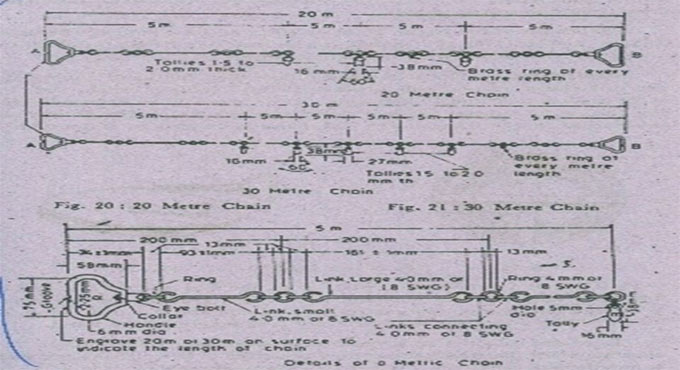This construction video tutorial is very useful for land surveyor. The tutorial sheds light on the rise and fall table in land surveying. Get some useful tricks to resolve the rise and fall table.
Rise and fall method is applied to resolve the levelling to detect the variation in elevation and elevation of points..
By resolving this table, it is possible to work out the reduced level of each point captured at staff rod with leveling machine. In order to work out the reduced level of an individual point, it is necessary to compute the rise and fall of points. After that, for reduced level, the following formula is applied :-
new R.L = old R.L – Fall
new R.L = old R.L + Rise
The table contains various heads like number, B.S (back sight), I.S (inter sight), F.S (fore sight), Rise, Fall, R.L (reduced level) and remarks.
B.S - Back sight (BS) is the abbreviation for "back sight reading". It means the first staff reading captured by the surveyor as soon as the levelling instrument is arranged and levelled. B.S is normally captured on the point of known reduced level as on the benchmark or a change point. The normally applied datum is mean sea level.
Fore sight (FS) is the abbreviation for "fore sight reading". It means the last staff reading captured prior to modify the instrument to the other position. It refers to the staff reading captured on point whose RL is to be ascertained. This sight is treated as negative and assumed from Height of Instrument to find out RL of the point.
Reduced Level (RL) in surveying stands for equating elevations of survey points relating to a common assumed datum. It refers to a vertical distance among survey point and selected datum plane. Therefore, it is taken as the base elevation that is applied as reference to consider heights or depths of other important places.
To get more detailed information, watch the following video tutorial.
Rise and fall method is applied to resolve the levelling to detect the variation in elevation and elevation of points..
By resolving this table, it is possible to work out the reduced level of each point captured at staff rod with leveling machine. In order to work out the reduced level of an individual point, it is necessary to compute the rise and fall of points. After that, for reduced level, the following formula is applied :-
new R.L = old R.L – Fall
new R.L = old R.L + Rise
The table contains various heads like number, B.S (back sight), I.S (inter sight), F.S (fore sight), Rise, Fall, R.L (reduced level) and remarks.
B.S - Back sight (BS) is the abbreviation for "back sight reading". It means the first staff reading captured by the surveyor as soon as the levelling instrument is arranged and levelled. B.S is normally captured on the point of known reduced level as on the benchmark or a change point. The normally applied datum is mean sea level.
Fore sight (FS) is the abbreviation for "fore sight reading". It means the last staff reading captured prior to modify the instrument to the other position. It refers to the staff reading captured on point whose RL is to be ascertained. This sight is treated as negative and assumed from Height of Instrument to find out RL of the point.
Reduced Level (RL) in surveying stands for equating elevations of survey points relating to a common assumed datum. It refers to a vertical distance among survey point and selected datum plane. Therefore, it is taken as the base elevation that is applied as reference to consider heights or depths of other important places.
To get more detailed information, watch the following video tutorial.
~~~~~~~~~~~~~~~~~~~~~~~~
Published By
Rajib Dey
www.constructioncost.co
~~~~~~~~~~~~~~~~~~~~~~~~
